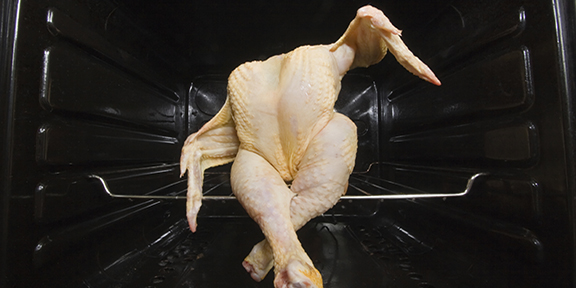At the ripe old age of twenty-one, I was looking for adventure. The whole world lay before me—San Francisco, New York, Europe—and I was anxious to explore it all. But I fell in love. The object of my affection was leaving New Orleans for the primitive wilds of the Ozarks and I would have followed him anywhere, so why not Arkansas?
I’m a city girl, or at least I was then, but life was about to take a very different path. I moved onto a farm, forty miles from any town and ten miles down a dirt road. No running water. Cold winters. I stayed for eight years until I had learned what I had come to learn.
One of the lessons learned was that if you wanted chicken for dinner, you had to kill one. This wasn’t just a new experience, this was a new galaxy. I had come to love my hens, developing an appreciation for the social practices of the flock. By way of explanation to city dwellers, the pecking order is a very real, highly developed, sophisticated system and not to be taken lightly.
My first attempt at poultry murder was to coax the hen at the bottom of the pecking order to commit suicide. It seemed a reasonable solution for her—and my—situation. Speaking softly to her, I explained the reality of her life as best I could. My persuasive powers are quite good if I must say so myself, but I failed in my mission to incite chicken suicides. They simply didn’t know how. I’m not sure they were distraught enough anyway.
The aforementioned object of my affection took control of the chicken murders and I was sent to the kitchen to process the bodies, a much more desirable position in the animal kingdom. We were processing and freezing thirty or so chickens that day, a time consuming but simple task. Bring them in, clean the inside, tuck in their legs and wings, bag them and freeze them. Simple enough. Every chicken body I had come in contact with before this was in a nice plastic wrap, carefully positioned on a plastic tray, ready for my culinary skills. My own chickens would soon follow suit.
There are many things for which a fine arts education did not prepare me and processing newly delivered chicken bodies was one of them. But I set to work, ready to complete the task at hand.
When your partner can commit chicken murder much faster than you can dispose of the bodies, several scientific principals are put into play. I’m not talking about germs. I’m talking about something few of us have any experience with: rigor mortis. My prior knowledge of rigor mortis was limited to crime shows on TV. Bodies stiffen. This was the sum total of my understanding. No one told me that chicken bodies would get rigor mortis if not processed fast enough. No, like most other things in life, I had to experience it firsthand.
When rigor mortis sets in, it makes permanent whatever position the chicken has assumed. Wings spread, legs splayed, my chickens were a wild bunch. I quickly succumbed to the inevitable and proceeded to bag the dancing flock. Once in the freezer, they resembled an entire ballet. Legs and wings sticking out in all directions. Pirouettes, fourth position, chorus lines—it was all there in my freezer.
Fully believing that if life gives you lemons you make lemonade, I began to appreciate the variety of fowlettes that rigor mortis had delivered to me. When planning dinner, I started selecting specific chickens according to their position. When serving multiple chickens to guests I would make my selections based on the overall effect of the group. “Isn’t this the Nutcracker?” “No, actually I believe it’s Swan Lake, the final scene.” Sometimes I would spend an hour digging through the freezer looking for four chickens in the same position so I could form a convincing chorus line. Our guests were either delighted or totally confused. Martha Stewart would have been impressed.
Ever since the year of the chicken ballet (as it came to be known), I cannot peruse the poultry section of the grocery store without viewing all those fowl and envisioning what a grand production such a large number of fowl could produce. But, alas, they are all in final bow position. Certainly a curtsey here or there but mostly final bow—a testament to the gaiety that could have been—with a little help from R. Mortis.
When you’re sitting down to your dinner before a turkey or duck or goose in final bow position, remember the chicken ballet and the chorus line that could have been. Happy holidays to you all and a wonderful ballet season too!
Originally published in The Good Life magazine

